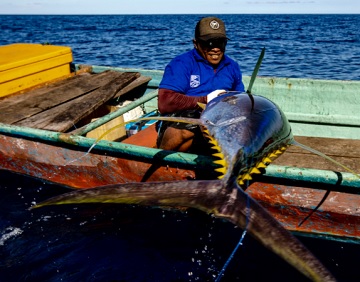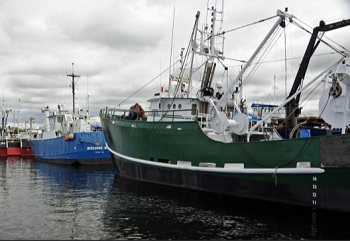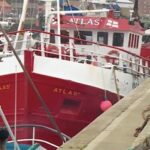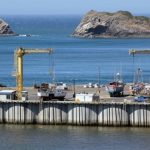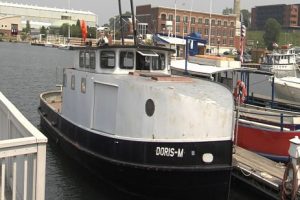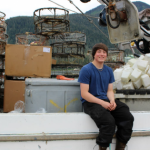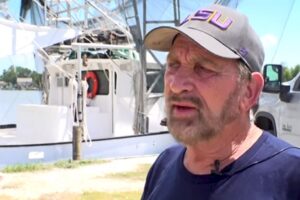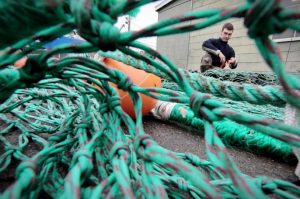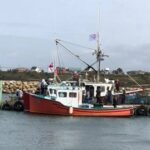U.S. Rep. Jeff Van Drew, D-2nd, joined Alaskan Rep. Don Young, a Republican, to introduce a bill reauthorizing the Magnuson-Stevens Fishery and Conservation Management Act on Thursday. But the bill would make changes to the law that some environmentalists fear may result in taking more fish than is sustainable. Among other things, the reauthorization would change how fishery councils determine fishery stock rebuilding timeframes, giving the public a greater role in the development of science and fishery management plans. In a statement, Van Drew said H.R. 3697 “ensures that we have healthy fisheries, keep anglers in the water and keep fishermen fishing.” >click to read< 09:10
Category Archives: Western Pacific
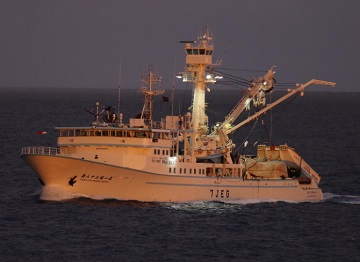
U.S. Coast Guard, Japanese Coast Guard and U.S. Navy medevacs fisherman off Guam
Members of the U.S. Coast Guard, Japan Coast Guard, and U.S. Navy rescued a mariner aboard a fishing vessel south of Guam. On Tuesday, June 7, 2022, U.S. Coast Guard Forces Micronesia/Sector Guam’s Joint Rescue Sub-Center (JRSC) received a report of a 55-year old male experiencing severe abdominal pain aboard F/V Fukuichimaru No. 83, nearly 725-nautical miles south of Guam. Photos, >click to read< 22:05
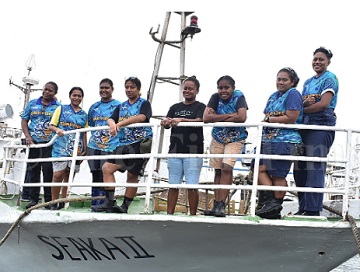
A world first – First all-female deck crew for Fiji
A world first, history was created yesterday when eight ladies set out to sea as the first full female deck crew on board tuna long-line vessel SEAKA II for a two-week fishing expedition. The initiative was made possible via a partnership between Fijian-owned company SeaQuest Fiji and the Pacific Islands Forum Fisheries Agency (FFA). FFA said the all-female deck crew was one step towards addressing gender imbalance in the Pacific tuna industry. “To see an all-female crew loading ice bait and stores, to see a female first officer, a female engineer and a female bosun, to see real progress in our shared goal of increasing female employment in the tuna harvesting sector. >click to read< 18:36

President Biden’s plan to save the oceans
FACT SHEET: Biden-Harris Administration Celebrates World Ocean Day with Actions to Conserve America’s Deepest Atlantic Canyon, Cut Plastic Pollution, and Create America’s First-Ever Ocean Climate Action Plan – >click to read< The following two bullet points are from the Whitehouse Press Release today. Commentary by Nils Stolpe, >click to read< 13:07
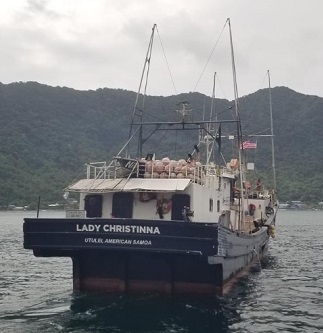
Tautai o Samoa Longline and Fishing Association elects’ new officers
New officers for the Tautai o Samoa Longline and Fishing Association have their work cut out for them with a host of challenges facing members. Issues such as poor fishing conditions, increased costs of operations and increased federal regulations. The association held its 1st annual meeting yesterday to elect officers and discuss the critical issues that impact this U.S. fishery. Tautai members are U.S. longline owners that operate in the U.S./ American Samoa EEZ and produce U.S. albacore for the Starkist Samoa plant. The Tautai fleet is the only U.S. longline fleet targeting South Pacific albacore. >click to read< 14:34
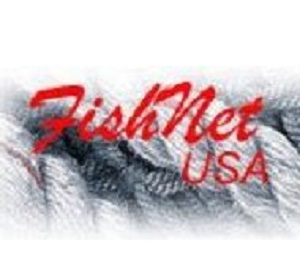
Reallocation: coming to a dock near you?
Ever since quota transfers in “shared fisheries” have been made so easy to justify (see the Massachusetts justification for the recent reallocation of fluke, bluefish and black sea bass at https://tinyurl.com/yckkr6vm), such transfers each year are going to cost us hundreds of tons of product and tens of millions of dollars of business. And as long as one-third of the voting members of the eight regional fishery management councils and three commissions either work for or run the state agencies that are funded in very large part by Wallop-Breaux revenues (see my most recent piece on Wallop-Breaux funding at https://fisherynation.com/

House Passes Sullivan’s American Fisheries Advisory Committee Act
U.S. Senator Dan Sullivan, a member of the Senate Commerce, Science and Transportation Committee, welcomed House passage this week of S. 497, the American Fisheries Advisory Committee Act, bipartisan legislation he introduced to create an industry-led committee to assist in the administration of fisheries marketing, research, and development grants. The Saltonstall-Kennedy (SK) Act provides funding for fisheries marketing, research, and development. These funds are derived from a portion of fishery import duties. To inform how these funds are allocated, Congress authorized a group of experts from different segments of the fishing industry to advise on commercial fishing problems and needs. Following a 1972 law, the original American Fisheries Advisory Committee was disbanded. In the committee’s absence, the National Marine Fisheries Service decides, by its own criteria, who receives grants. >click to read< 12:36
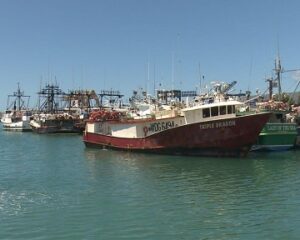
Hawaii fishermen on the hook for high costs as seafood prices continue to rise
You may be seeing trouble when you pull out your wallet to pay for fish and seafood, but it’s the fishing industry that’s threatened right now. As fisherman Paul Dodder prepares to once again head out to sea. Expenses are on his mind. “Fuel prices are always the number one expense,” said Dodder. Diesel fuel we’re told is up 50%. But there are other costs as well. “Baits and supplies for your crew, all of that has increased 40%-50%,” said Hawaii Longline Association Executive Director Eric Kingma. Those costs on top of increasing demand are driving prices up. Video, >click to read< 19:34

S.497 would establish the American Fisheries Advisory Committee within Department of Commerce
After reaching out to Senator Ed Markey and Senator Elisabeth Warren and informing them that under NOAA, the SKG Grant money was not going to our fisherman as intended. My experience of being on a panel in Saint Petersburg to evaluate the applicants for two days, I discovered that the panel was there to please the public and that NOAA has complete say of who got the money! I reported this to Bruce Schactler, and Senator Sullivan. Markey who was opposed, sent his aid to met with me. After I told her what happened Markey came on board and it will now go to the House of Representatives. I am asking all Senators to support this bill. It will set up an advisory panel as was in 1954 and give our fisherman a better chance of the funds. Please, >click to read< Best Regards, Sam Parisi
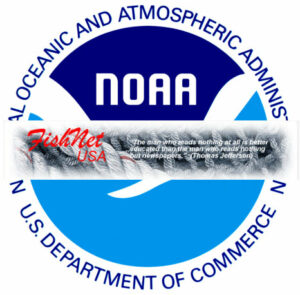
Fisheries management isn’t supposed to be robbing Peter to pay Paul
MAFMC and ASMFC Approve Changes to Commercial and Recreational Allocations of Summer Flounder, Scup, and Black Sea Bass,,, For all three species, these changes result in a shift in allocation from the commercial to the recreational sector. At the same time, using the same “scientific” rationale to disguise what seems nothing more than a blatantly political decision, the Gulf of Mexico Fishery Management has recommended that the red grouper fishery also be reallocated,,, If NOAA/NMFS is allowed to continue using the new MRIP Fishing Effort Survey, every mixed use fishery from Maine through Texas should expect attempts at quota allocation shifts from the commercial to the recreational sector. >click to read< By Nils Stolpe/FishnetUSA 13:52
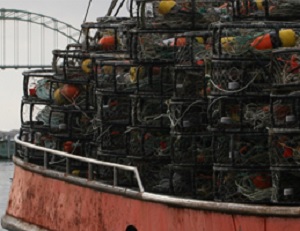
Commercial Fishing Safety on the West Coast
In 2009, NIOSH completed an in-depth study of commercial fishing fatalities in the United States for the decade spanning 2000-2009. The purpose of the study was to identify the most hazardous fisheries around the country and to describe the unique safety issues in each. For this study the US was divided into four fishing regions: Alaska, West Coast, East Coast, and the Gulf of Mexico. The results of this analysis for the West Coast region can be found in the document,,, >click to read< 13:18

National: Legal Petition Seeks Federal Ropeless Rule to Save Whales, Turtles From Fishing Gear
The Center for Biological Diversity formally petitioned the National Marine Fisheries Service to require crab, lobster and other trap fisheries to convert to new ropeless or “pop-up” gear within the next five years. The petition requests that the agency prioritize the transition in national marine sanctuaries.,, The proposed change would protect whales and other animals from entanglements in California’s Dungeness crab fishery, New England’s lobster fishery, the stone crab fishery in the Gulf of Mexico, and others. >click to read< 07:17
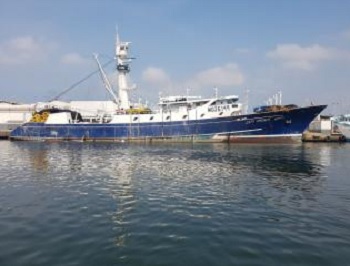
U.S. agrees to $725,000 settlement in fishing vessel pollution case
San Diego-based JM Fisheries LLC, G.S. Fisheries Inc., the companies’ manager, and the chief engineer of the commercial fishing vessel F.V. Capt. Vincent Gann have agreed to pay a total of $725,000 in civil penalties to settle federal Clean Water Act claims related to oil pollution violations.,, San Diego-based JM Fisheries LLC, G.S. Fisheries Inc., the companies’ manager, and the chief engineer of the commercial fishing vessel Capt. Vincent Gann have agreed to pay a total of $725,000 in civil penalties to settle federal Clean Water Act claims related to oil pollution violations. >click to read< 17:09
Democrats And Republicans Debate Changes To Magnuson-Stevens Fishery Act
Everyone needs to watch this. You should be alarmed. >click to watch. 09:33
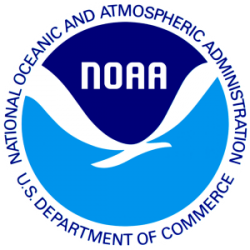
NOAA audit questions Wespac’s grant award for DLNR
An audit by the Inspector General of the National Oceanic and Atmospheric Administration has found questionable expenditures of $1.23 million by the Western Pacific Regional Fishery Management Council, and includes the citation of a sole-source contract of $344,525 by the CNMI’s Department of Lands and Natural Resources for a fishing vessel and training services. In addition to the $1,237,671 in questioned costs, the audit, which was released last week,,, In its comments to the audit, the council disagreed that it did not follow the competitive procurement requirements for the contracts where sole-source justification were provided. >click to read< 08:57
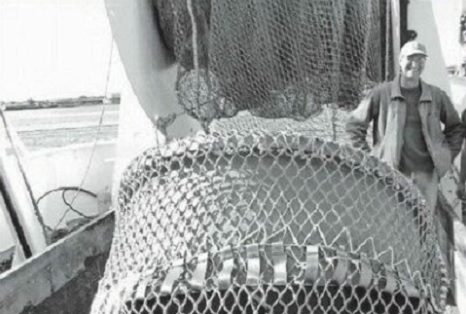
Jim Kendall – Finding Common Ground
With regard to the letter from Sam Novello posted on Fisherynation.com, Finding Common Ground off to a Bad Start, he very eloquently laid out some of the faults, errors, and out and out incompetence of the Northeast Fisheries Science Center with respect to their continued mismanagement of the Northeast fisheries stock assessments. I know from past work and associations with the NEFSC that this has been going on for so long that they likely now believe their own Mantra about their science being the best (and only way) in which to compile the NE groundfish stock assessment. Unfortunately groundfish is not their only problematic stock assessment. >click to read< 16:32
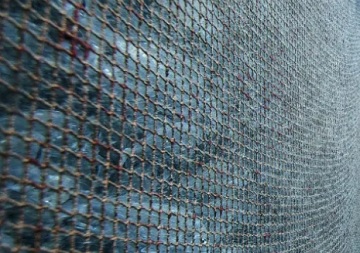
The U.S. is hungry for seafood, but more industrial aquaculture is not the answer
An often cited statistic to prove the need for industrial aquaculture is that as a country, we import as much as 90% of the seafood we consume. A lesser-known fact is that U.S. seafood exports have grown to record levels over the past decade. Rather than allowing destructive fish farming practices that can pollute our environment and displace commercial fishing in our markets, we should support our domestic fishing communities, so they can sell more of the higher-quality wild-caught seafood we produce here at home. Right now, megacorporation’s are pushing the U.S. Environmental Protection Agency and other federal agencies to gut existing regulations and fast-track permit approvals to build new floating factory fish farms and control even more of the seafood market. >click to read< 14:11
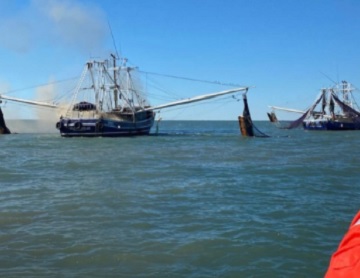
Fishing Vessel: Engine Room Only Shutoff Valve Let Fire Spread
Fuel shutoff valves outside the engine room might have stopped a fire that destroyed a shrimp boat after an explosion off Louisiana last year, federal investigators say. Other shrimpers saw the smoke and rescued all four people from the F/V Master Dylan. But the $300,000 boat was a total loss, the National Transportation Safety Board said in a report issued Tuesday. The report said one of the boat’s two generators exploded while the crew was shrimping off Port Fourchon about 7:45 a.m. on Dec. 1. The boat was registered in Louisiana but had left Port Arthur, Texas on Nov. 29. The captain emptied a fire extinguisher into the engine room without diminishing the blaze. >click to read< 15:14
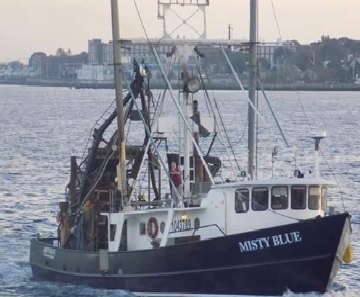
National Transportation Safety Board Report on U.S. Fishing Vessel Accidents
For the eighth year, the National Transportation Safety Board (NTSB) has released its “Safer Seas Digest 2020,”,,, While the report examines all maritime accidents, from inland towing to cargo ships, this article will focus on five notable fishing vessel incidents that occurred in 2019. A significant contributing causal factor to the fishing vessel accidents is crew fatigue. The NTSB noted in the digest that an effective way to prevent fatigue among crewmembers is for owners/operators to have measures in place to ensure that crewmembers receive enough rest to adequately perform navigational and lookout duties. >click to read< 08:52
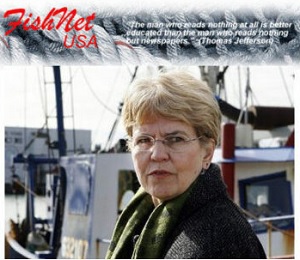
Has the Precautionary Principle been blown away by wind power?
Clog our near shore and offshore waters with hulking (approaching 1,000 feet tall today, who knows what’s in store for tomorrow?) structures supporting huge rotors with tips moving through the air at velocities approaching 200 miles per hour? So what? Festoon our seabeds with electrical cables carrying huge amounts of electricity, the passage of which will generate electro-magnetic fields that will almost certainly have some effect on some of the species of critters that will be influenced at some level by those fields daily, monthly or annually? Who cares? Influence wave/current/tidal scouring and associated turbidity in undetermined-and very likely undeterminable-ways on the fish, marine mammals, birds, phyto- and zooplankton, and other sea life? What’s the difference? >click to read< By Nils Stolpe-FishnetUSA, more from Nils, >click here< 08:05

Sea of choices confronts Biden in ocean protection
The Biden administration appears to have a head start on protecting the United States’ oceans. After all, on paper, the nation is already more than two-thirds of the way to the goal. But as the administration puts together a tracking mechanism for its pledge to conserve 30 percent of the nation’s lands and waters by 2030, environmental activists warn that frequently cited statistics provide a misleading picture of ocean conservation. At the same time, advocates for the fishing industry question counter the nation is much closer to the final objective, if not already there. They argue that conservation shouldn’t always mean activities like fishing are banned and say their industry has shown itself willing to help protect vulnerable species. >click to leave< 17:04
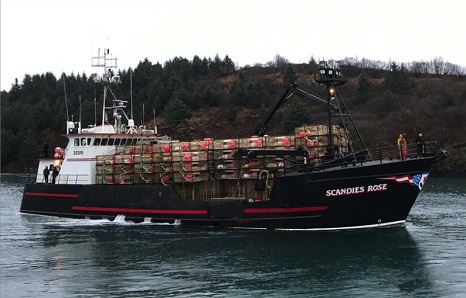
NTSB to Host Roundtable on Fishing Vessel Safety
National Transportation Safety Board Chair Jennifer Homendy is set to host a virtual roundtable next month on improving fishing vessel safety. The commercial fishing industry remains largely uninspected and is a marine sector of concern.,, The roundtable will feature government officials, industry leaders, fishing vessel operators, safety experts and survivors of fishing vessel accidents to discuss what can be done to address commercial fishing safety concerns, implement NTSB safety recommendations and improve the safety of fishing operations in the U.S. >click to read< – The roundtable is set to take place October 14, 2021. More details can be found here. 13:27
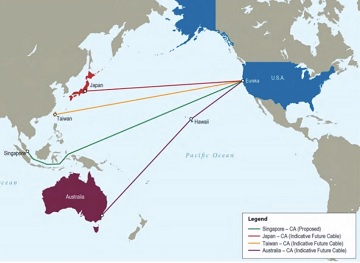
California Coastal Commission OKs world’s longest fiber optic cable from Eureka to Singapore
Stretching from Eureka to Singapore, the 10,000 mile long cable will bring enhanced broadband connectivity to Humboldt County and beyond as soon as 2023. RTI plans to install four steel pipes extending from a landing site in Samoa approximately 3,600 feet offshore to serve as conduits for two submarine fiber optic cables. Additional cables may extend to Australia and Japan as well. North Coast commercial fisherman Kevin Collins expressed concern for the trawling fishermen who, he feels, will be “the primary group impacted by the cable.” Humboldt Fishermen’s Marketing Association was not looking to oppose or delay the installation of this cable but wished to express “grave concerns California fishermen have over the flawed process taking place for the mitigation” of the project. >click to read< 13:45
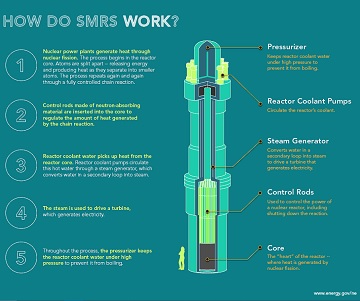
Please Congress, we need real energy solutions, not your offshore wind farm fantasy!
200 small nuclear reactors are presently powering 160 ships and submarines all around the world, and have been for decades. What’s on foot is a move to bring those reactors onshore and use them to shore up power grids being wrecked by the chaotic intermittency of wind and solar. STT promotes nuclear power because it works: safe, affordable, reliable and the perfect foil for those worried about human-generated carbon dioxide gas,,, One of the feeble ‘arguments’ against it, is that nuclear power plants are of such vast scale that they take longer to build than the pyramids of Giza, and cost twice as much. SMR technology takes the sting out of that case. And, as Walter Starck outlines below, SMRs provide the perfect opportunity to reintroduce our good friends logic and reason into the debate about what powers us now, and the future. >click to read< 12:37

Customs Crackdown: U.S. blocks Fiji fishing boat from unloading, citing forced labor and debt bondage
Customs officials have blocked a commercial fishing boat from bringing tuna and other seafood into the United States, citing what they said was the use of forced labor by its operator, a company based in Fiji. The Customs and Border Protection agency said on Wednesday that it had found that operators of Hangton No. 112,a long-liner owned by the Hangton Pacific Co. Pte Ltd., had withheld workers’ wages, kept their identity documents and subjected them to debt bondage. If the vessel tries to dock at a U.S. port, or distribute its cargo in the country, officials said, its cargo would be held until its operator could prove that the fish were not caught using what the agency has described as “modern-day slavery.” >click to read< 10:35

Wind farms: Where are all of the ocean saviors?
The precautionary principle has deep roots finding expression in sayings such as ‘an ounce of prevention is worth a pound of cure’ or ‘better safe than sorry’. The use of the precautionary principle in ecosystem management is especially important,,, Repeated failures of management highlighted by the collapse of northern cod off Canada, the California sardine fishery, and herring, sandeels, blue whiting and capelin stocks in the North Sea have demonstrated the need for this approach in order to help address scientific uncertainty. Yet when it comes to protecting huge swaths of ocean,,, Clog 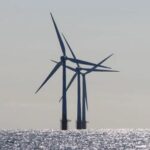 our near shore and offshore waters with hulking (approaching 1,000 feet tall today, who knows what’s in store for tomorrow?) structures supporting huge rotors with tips moving through the air at velocities approaching 200 miles per hour? So what? Festoon our sea beds with electrical cables carrying huge amounts of electricity, And what of undersea server farms,,, >click to read< 15:43 Nils E. Stolpe/FishNet USA. © 2021 Nils E. Stolpe, July 31
our near shore and offshore waters with hulking (approaching 1,000 feet tall today, who knows what’s in store for tomorrow?) structures supporting huge rotors with tips moving through the air at velocities approaching 200 miles per hour? So what? Festoon our sea beds with electrical cables carrying huge amounts of electricity, And what of undersea server farms,,, >click to read< 15:43 Nils E. Stolpe/FishNet USA. © 2021 Nils E. Stolpe, July 31






